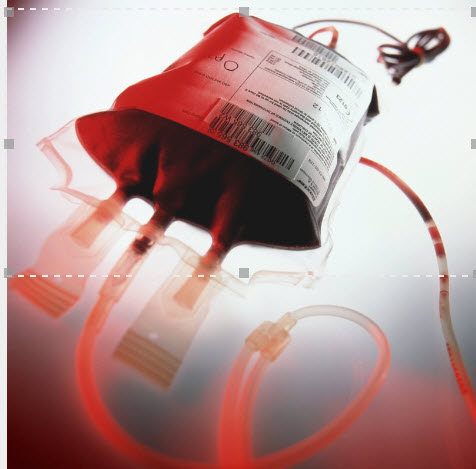Transfusion Reaction
1.Allergic Reaction – it is caused by sensitivity to plasma protein of donor antibody, which reacts with recipient antigen.
Assess for: Flushing, Rash, hives, Pruritus, Laryngeal edema, difficulty of breathing
- Febrile, Non-Hemolytic – it is caused by hypersensitivity to donor white cells, platelets or plasma proteins. This is the most symptomatic complication of blood transfusion
Assess for: Sudden chills and fever, flushing, headache, anxiety.
- Septic Reaction– it is caused by the transfusion of blood or components contaminated with bacteria.
Assess for: Rapid onset of chills, Vomiting, Marked Hypotension, High fever
- Circulatory Overload – it is caused by administration of blood volume at a rate greater than the circulatory system can accommodate.
Assess for: Rise in venous pressure, Dyspnea, Crackles or rales, Distended neck vein, Cough, Elevated BP
- Hemolytic reaction –it is caused by infusion of incompatible blood products.
Assess for: Low back pain (first sign). This is due to inflammatory response of the kidneys to incompatible blood.Chills, Feeling of fullness, Tachycardia, Flushing, Tachypnea, Hypotension, bleeding, Vascular collapse, Acute Renal Failure.
Interventions
- If blood transfusion reaction occurs: STOP THE TRANSFUSION.
- Start IV line (0.9% NaCl)
- Place the client in Fowler’s position if with Shortness of Breath and administer O2 therapy.
- The nurse remains with the client, observing signs and symptoms and monitoring vital signs as often as every 5 minutes.
- Notify the physician immediately.
- The nurse prepares to administer emergency drugs such as antihistamines, vasopressor, fluids, and steroids as per physician’s order or protocol.
- Obtain a urine specimen and send to the laboratory to determine presence of hemoglobin as a result of RBC hemolysis.
- Blood container, tubing, attached label, and transfusion record are saved and returned to the laboratory for analysis.
Flash Cards (questions) – https://quizlet.com/55952208/blood-transfusion-nclex-flash-cards/
Questions –
http://www.nclexpinoy.com/2016/01/nclex-practice-questions-blood.html
https://nurseslabs.com/blood-transfusion-nclex-practice-quiz-15-items/



